Overview
This article emphasizes the critical role of selecting essential anion exchange columns for pharmaceutical lab managers, particularly for effective protein purification and other applications. It showcases notable products such as JM Science’s anion columns and Bio-Rad’s systems, highlighting their versatility and efficiency. These instruments significantly enhance laboratory workflows and research outcomes, empowering lab managers to make informed decisions regarding their purification processes. By focusing on high-quality scientific instruments, this overview underscores the importance of precision and reliability in laboratory settings.
Introduction
In the realm of pharmaceutical research, the reliance on advanced separation techniques is paramount for ensuring the purity and efficacy of therapeutic compounds. Anion exchange chromatography emerges as a pivotal method, empowering lab managers to refine their purification processes and elevate the quality of their outcomes. Yet, with a multitude of options at their disposal, how can one effectively determine which anion exchange columns will optimally fulfill their specific laboratory requirements? This article explores ten essential anion columns, examining their distinctive features and applications while addressing the critical considerations that lab managers must navigate during their selection process.
JM Science Anion Exchange Columns: Versatile Solutions for Protein Purification
JM Science offers a diverse range of anion column devices specifically designed for efficient protein purification. These advanced structures utilize high-performance materials that ensure optimal binding and elution of proteins, making them suitable for various applications in pharmaceutical laboratories. Their inherent versatility allows for precise adjustments in pH and ionic strength—factors that are critical in achieving desired separation outcomes.
Lab managers can leverage these innovative devices to enhance their purification processes, ultimately ensuring high yield and purity of target proteins. This capability not only streamlines laboratory workflows but also elevates the overall quality of research outcomes.
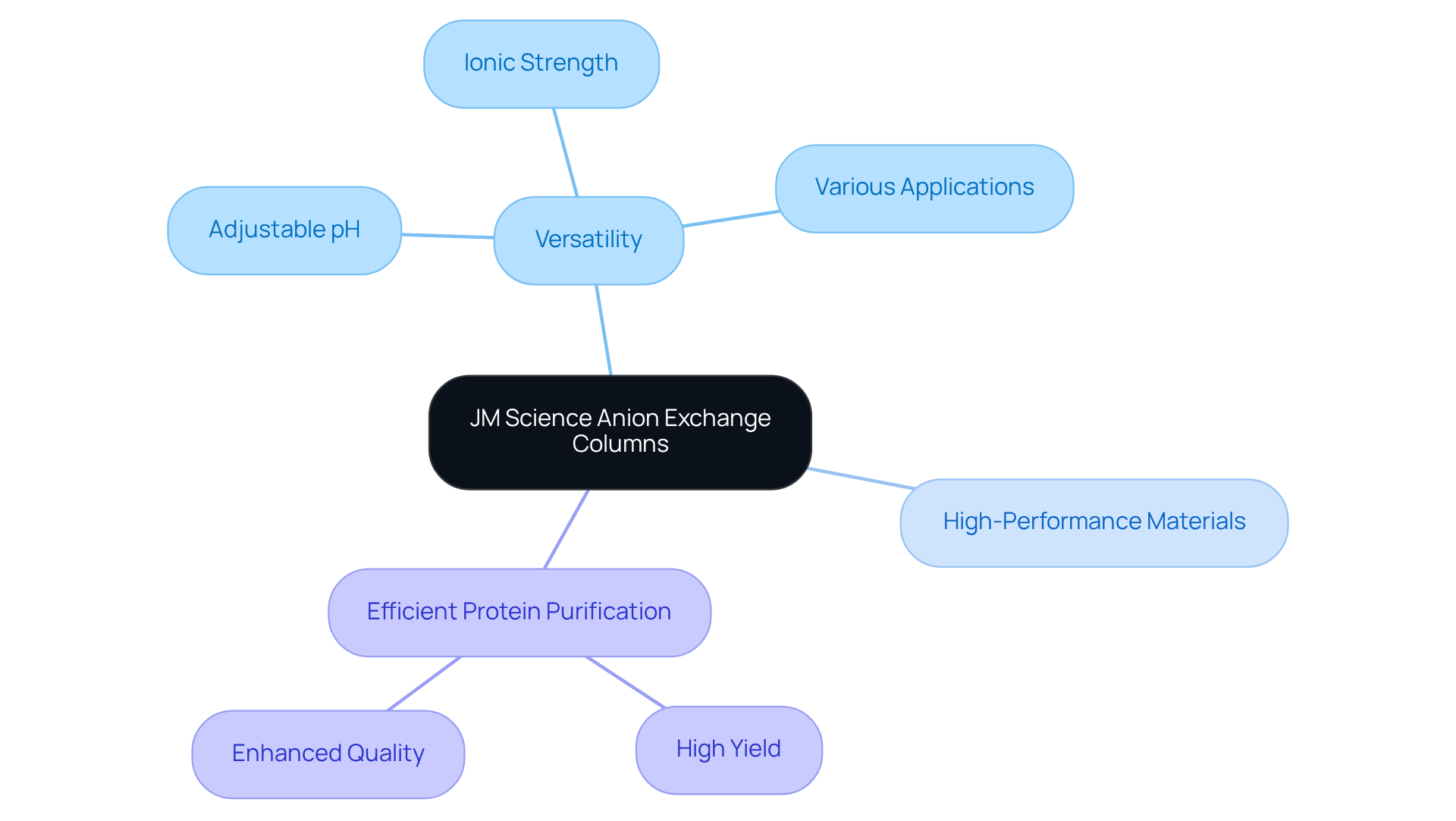
Bio-Rad Bio-Scale™ Mini UNOsphere™ Q Anion Exchange Columns: Ideal for Small-Scale Purifications
The Bio-Rad Bio-Scale™ Mini UNOsphere™ Q systems stand out as an exceptional solution for small-scale purifications, catering specifically to laboratories that prioritize flexibility and efficiency. Designed for ease of use, these prefilled sections are compatible with a variety of chromatography systems, allowing for seamless integration into existing workflows. Their innovative design facilitates rapid processing of samples, a crucial advantage in research environments where effective time and resource management is paramount. Laboratory supervisors can leverage these sections to achieve high-resolution separations, all without the need for extensive setup or additional equipment, streamlining operations and enhancing productivity.
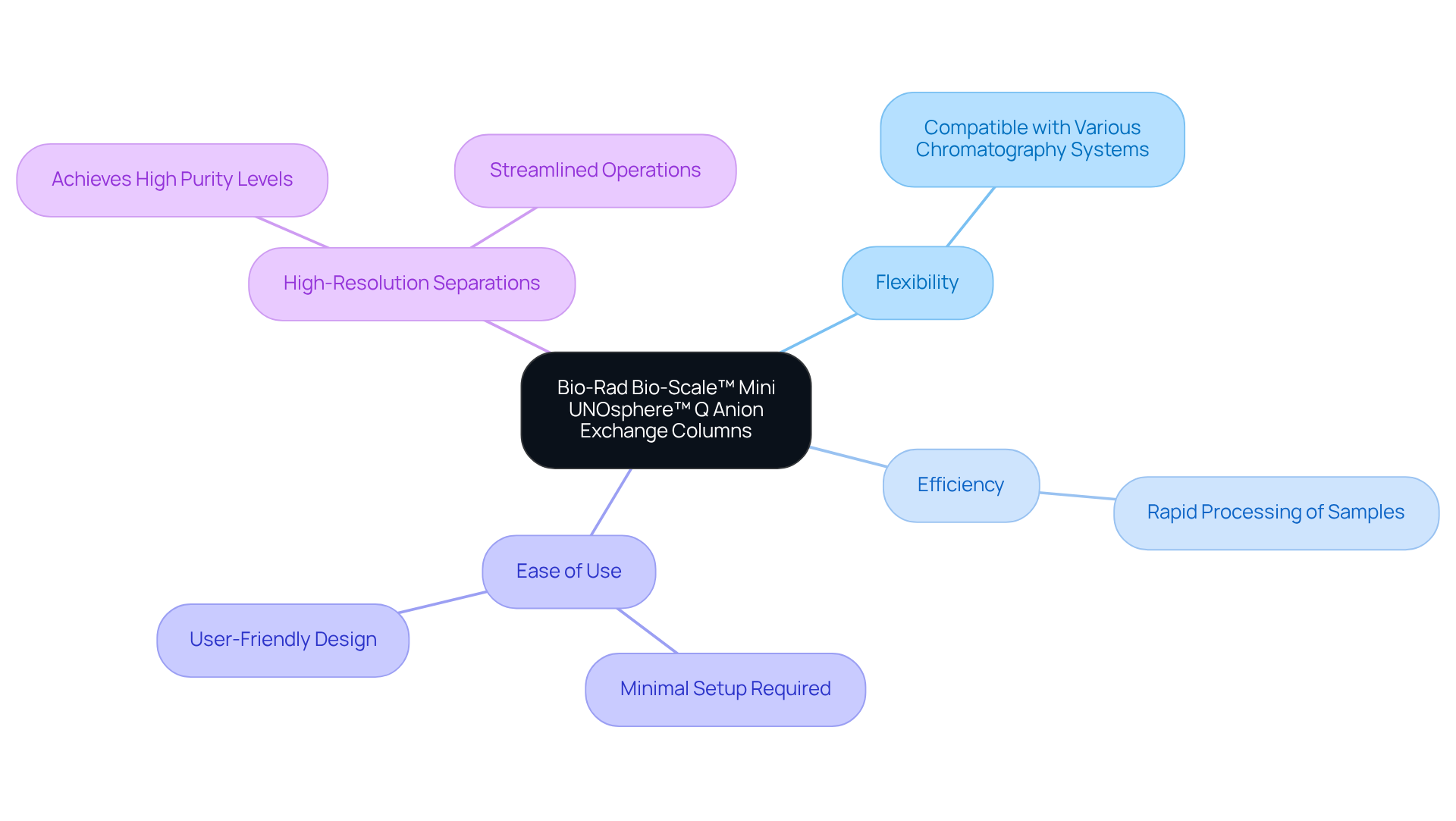
Hamilton Company RCX-10 Anion Exchange HPLC Columns: High-Performance Solutions for Complex Separations
The Hamilton Company RCX-10 anion column exchange HPLC devices, available through JM Science Inc., are engineered for high-performance applications, particularly in complex separations. These devices feature a unique packing substance that enhances resolution and reduces analysis duration, ensuring laboratory supervisors can achieve optimal results. Their robust design accommodates both isocratic and gradient elution methods, providing versatility for varied analytical needs. With JM Science's commitment to delivering high-quality scientific instruments, lab managers can rely on the RCX-10 units to yield consistent results, even with challenging samples, thereby enhancing overall laboratory efficiency.
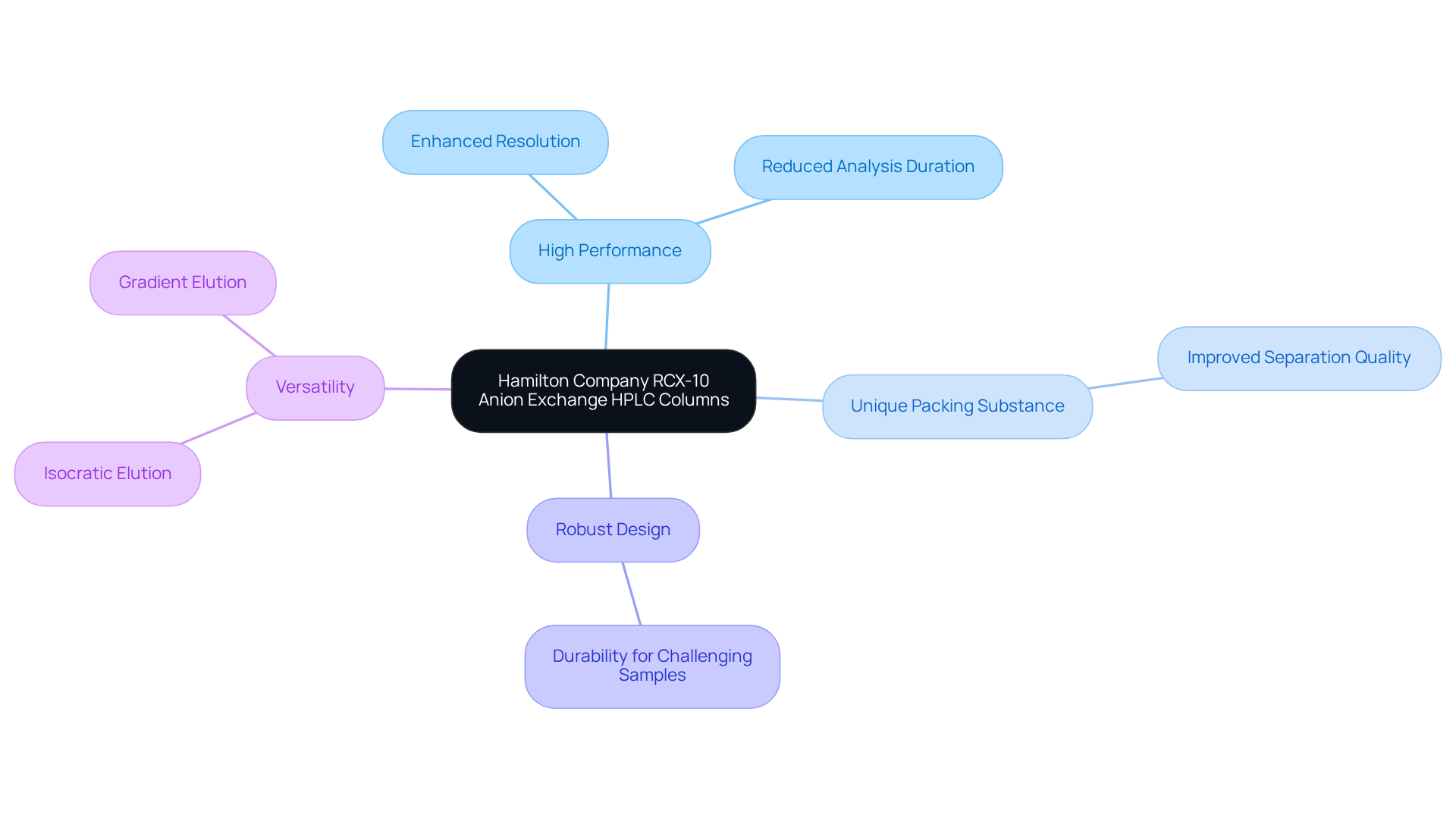
Adeno-Associated Viral Capsid Stability: Anion Exchange Chromatography Applications in Biopharmaceuticals
Anion separation techniques are pivotal in the purification of adeno-associated viral (AAV) capsids, which are vital for gene therapy applications. The stability of these capsids during purification is critical for preserving their functionality. By utilizing anion column separation devices, researchers can effectively differentiate between empty capsids and full ones, thereby enhancing the yield of functional vectors. This application underscores the importance of selecting the appropriate separation technique to ensure the success of biopharmaceutical products. In an era where precision in gene therapy is paramount, the choice of purification methods directly impacts the efficacy of therapeutic outcomes.
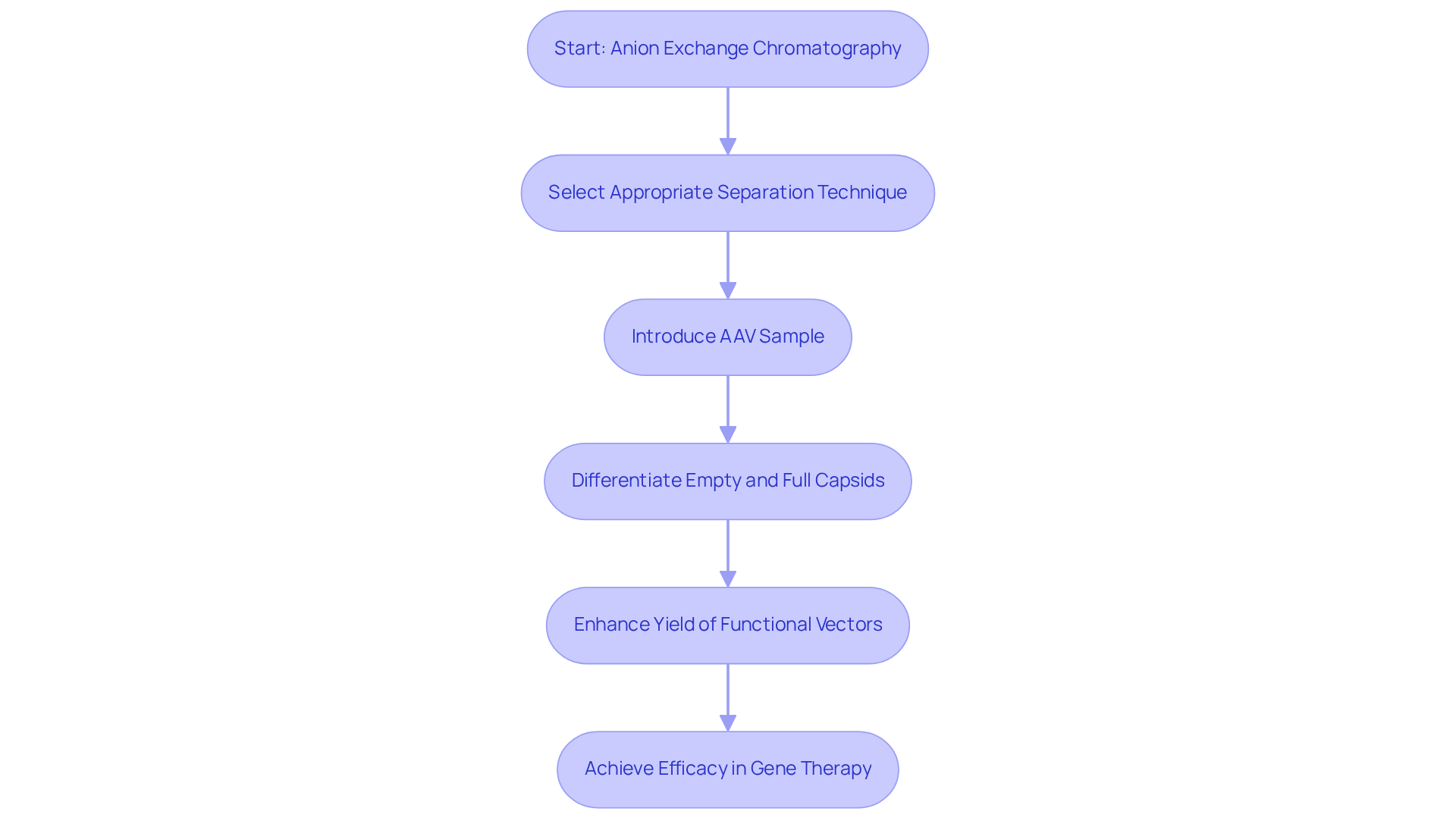
Selecting the Right Anion Exchange Column: Key Considerations for Lab Managers
When selecting an anion column for separation, lab managers must consider several critical factors. These include:
- The target molecule's charge
- The desired resolution
- The column's capacity
- Compatibility with existing separation systems
- The specific requirements of the application
Understanding the differences between strong and weak resins in the anion column is vital, as these distinctions can significantly influence binding and elution profiles. By thoroughly evaluating these elements, lab supervisors can optimize their separation processes and achieve superior outcomes.
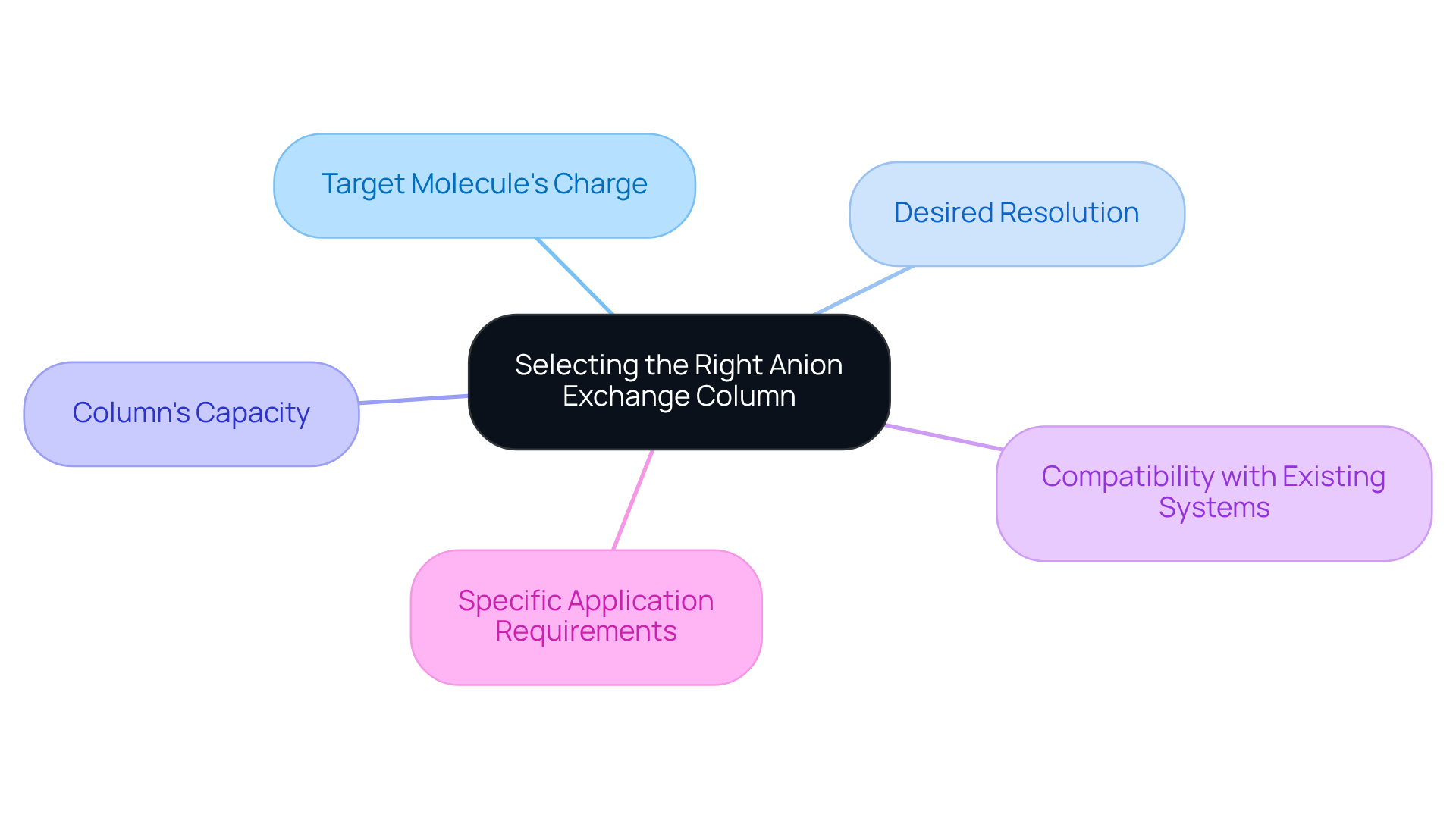
Anion Exchange Chromatography in Wastewater Treatment: Addressing Environmental Challenges
Anion column chromatography is increasingly recognized as a vital technology in wastewater treatment processes, specifically for removing harmful anions such as nitrates and phosphates. By employing specialized resins in the anion column, treatment facilities can significantly reduce the concentration of these pollutants, thereby enhancing overall water quality. This application not only tackles pressing environmental challenges but also aids facilities in meeting stringent regulatory standards. Environmental lab managers can leverage this innovative technology to elevate their treatment processes and actively contribute to sustainability initiatives. The integration of such advanced methodologies represents a critical step toward achieving cleaner water systems and a healthier ecosystem.
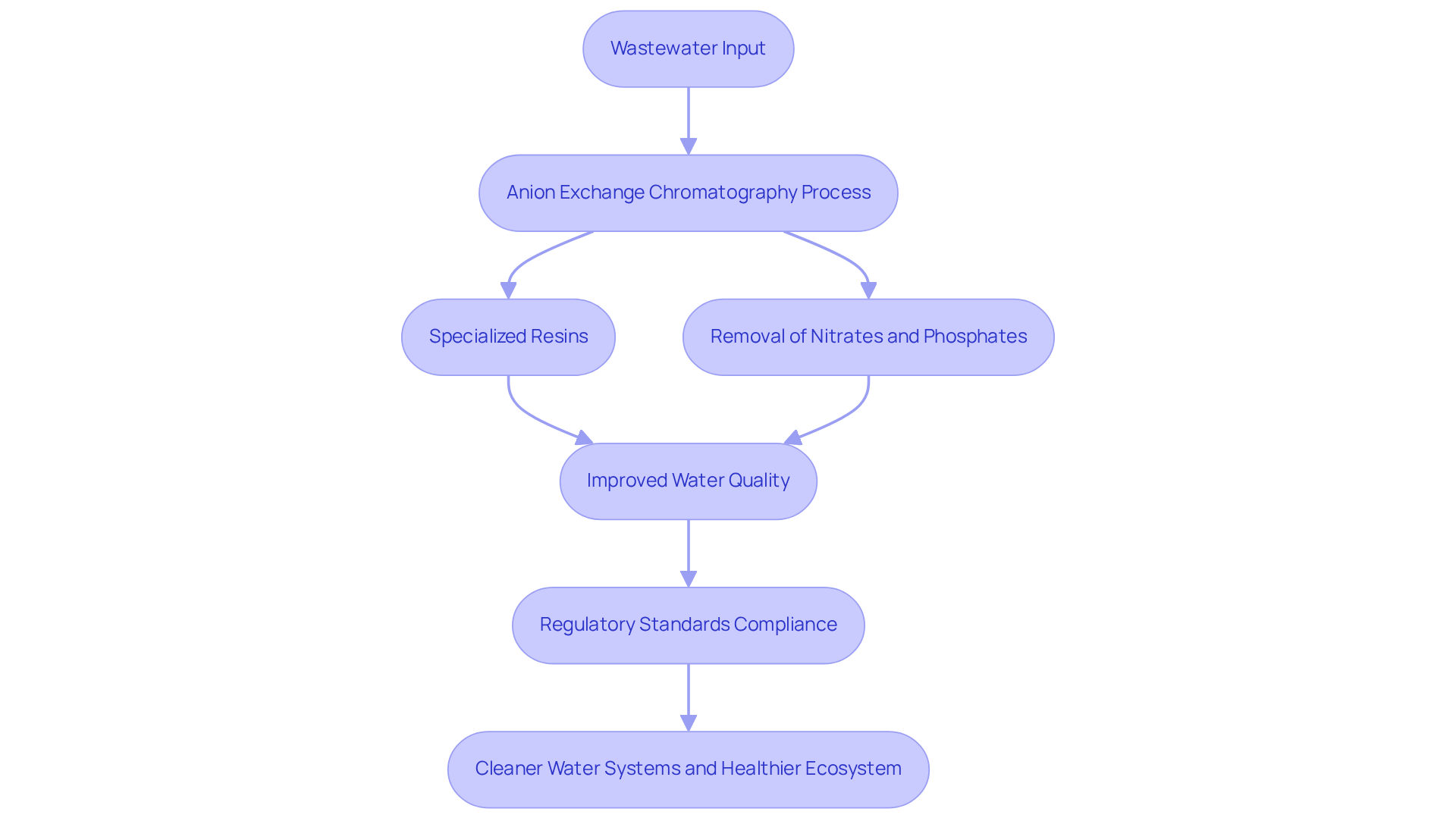
Mixed-Mode Retention Mechanisms: Enhancing Anion Exchange Chromatography Performance
Mixed-mode retention mechanisms effectively integrate various separation methods, such as hydrophobic interaction and size exclusion, with anion column swapping. This innovative approach enhances the performance of the anion column in chromatography by facilitating intricate interactions between analytes and the stationary phase.
Laboratory supervisors can leverage mixed-mode supports to achieve greater resolution and selectivity, particularly when addressing challenging samples that exhibit overlapping peaks in conventional techniques. This versatility not only streamlines analytical processes but also significantly enhances outcomes across diverse applications.
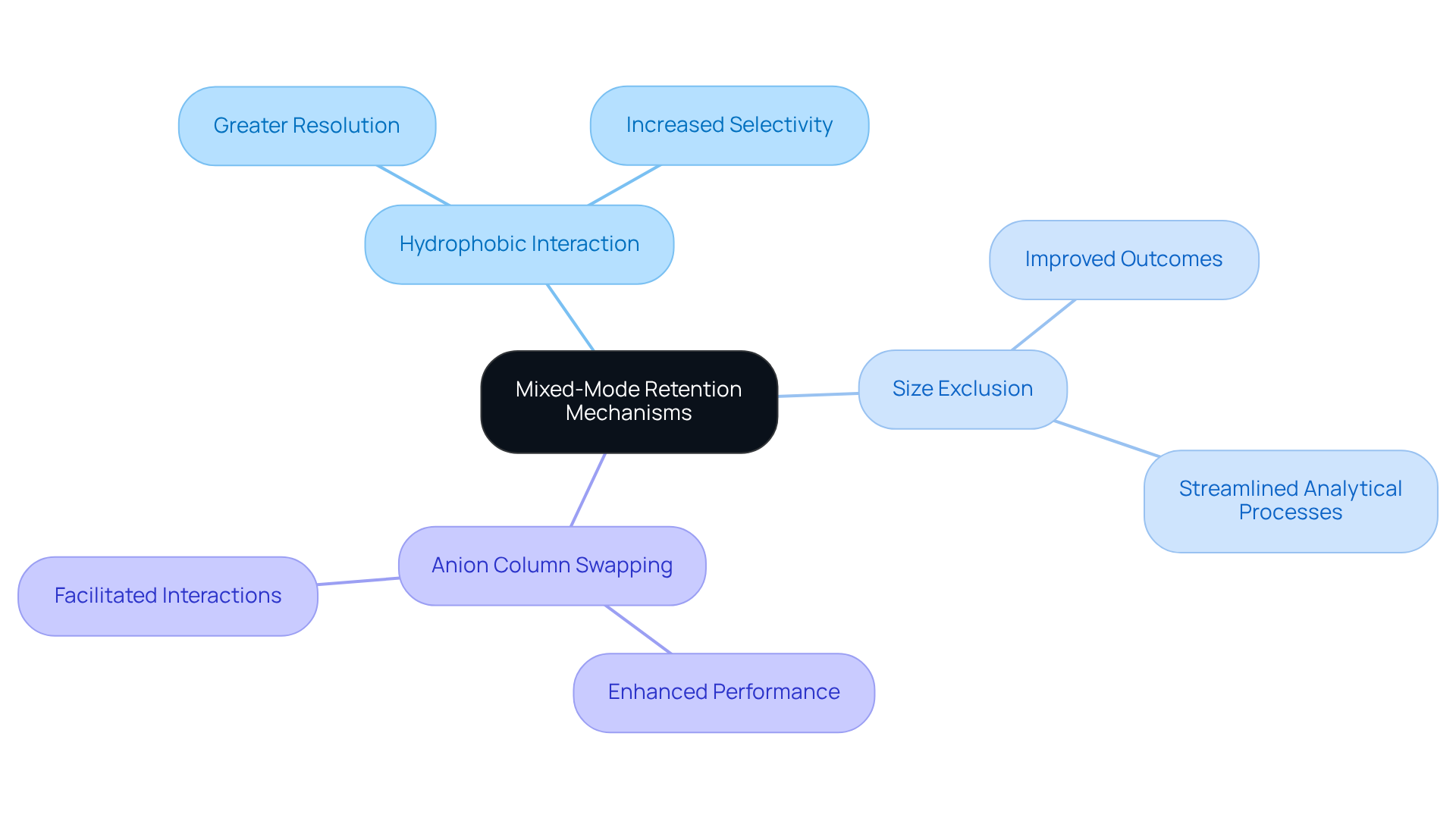
Hydrophobicity of Polymer-Based Anion Exchange Columns: Implications for Column Selection
The hydrophobicity of polymer-based anion column devices plays a pivotal role in their performance, particularly in the separation of complex biomolecules. Columns exhibiting higher hydrophobicity are likely to engage in stronger interactions with non-polar components, which can lead to enhanced resolution. Therefore, it is crucial for lab supervisors to consider the hydrophobic properties of the anion column when selecting them for specific applications, as this choice directly impacts binding capacity and elution profiles. By understanding these implications, supervisors can significantly refine their separation techniques, ultimately achieving improved outcomes.
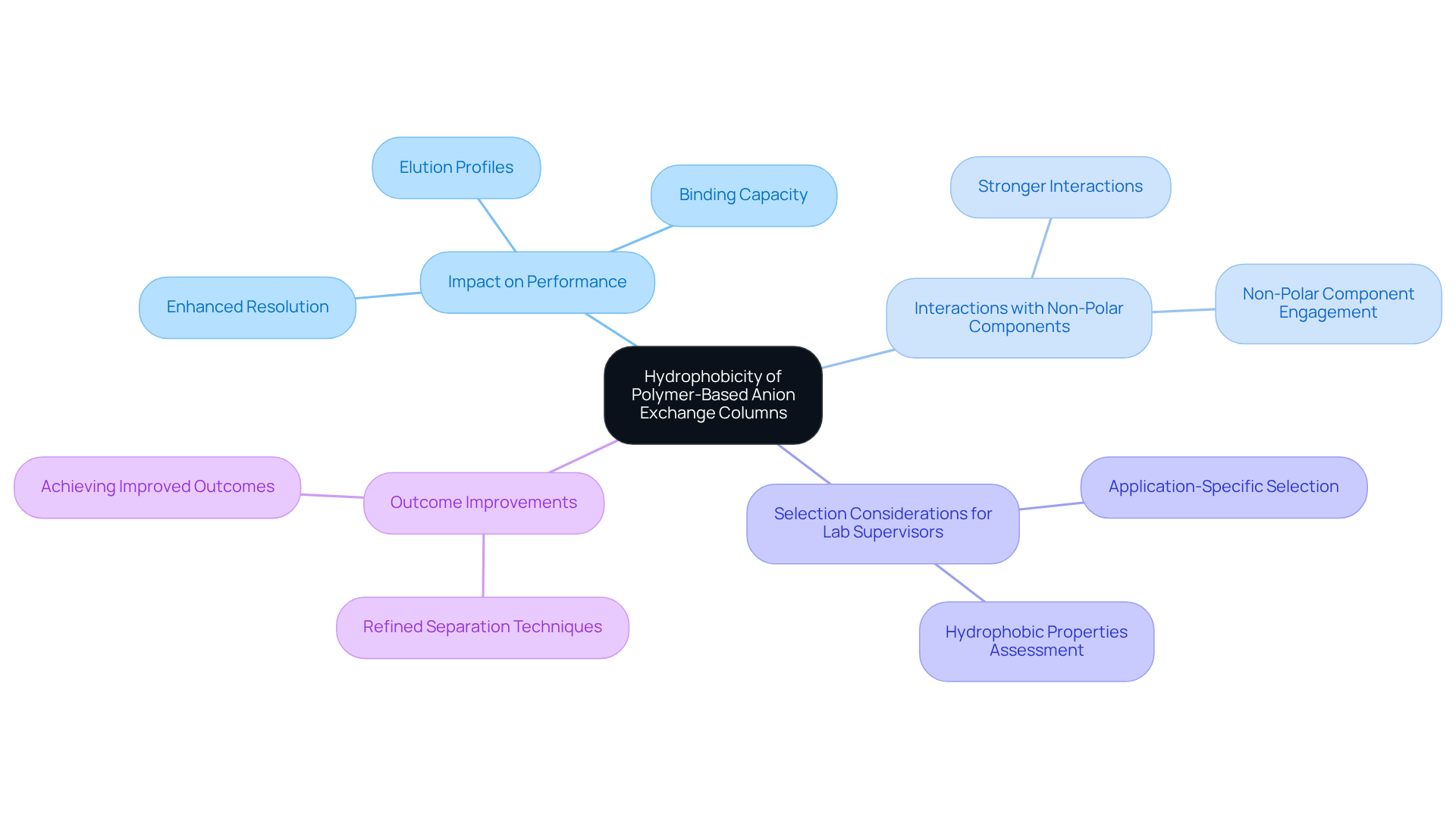
Pharmaceutical Development Applications: Leveraging Anion Exchange Chromatography
Anion separation methods represent a cornerstone technique in pharmaceutical development, particularly for the purification of therapeutic proteins and monoclonal antibodies. Their capacity to separate charged biomolecules based on net charge enables high-resolution purification, which is crucial for ensuring both the efficacy and safety of pharmaceutical products. Lab supervisors can leverage this technique to optimize purification processes, reduce impurities, and elevate the overall quality of drug development initiatives. By integrating these methods, organizations can enhance their operational efficiency and commitment to producing high-quality therapeutics.
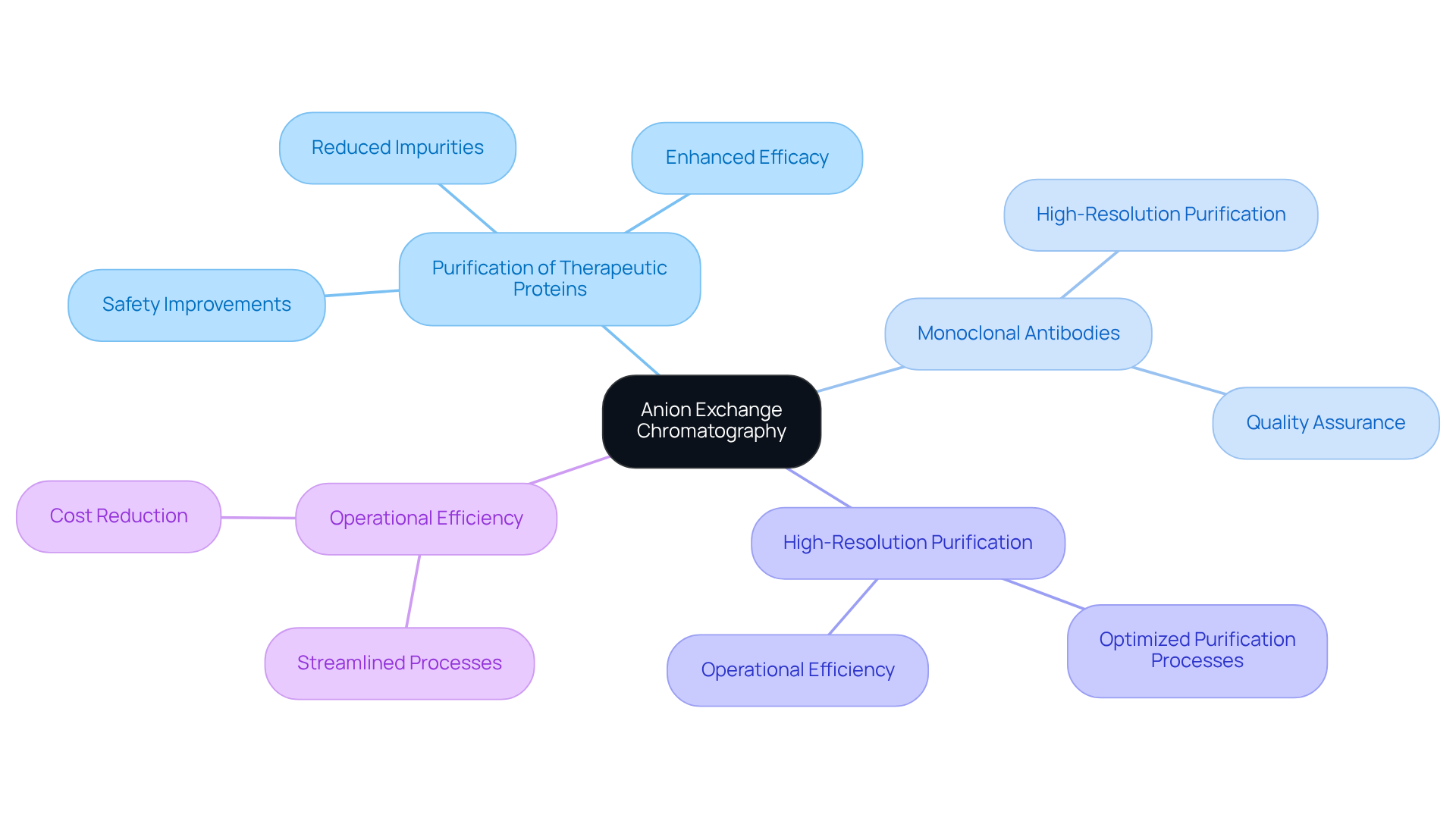
The Critical Role of Anion Exchange Chromatography: Essential Applications for Every Lab Manager
The anion column exchange techniques play a crucial role in various fields, such as biopharmaceuticals, environmental testing, and food safety. Their versatility and effectiveness in separating charged molecules using anion column establish them as indispensable tools for laboratory supervisors across diverse sectors.
By comprehensively understanding the critical applications of this technique, managers can make informed decisions regarding their chromatography needs. This ensures the selection of the appropriate methods and columns, such as the anion column, ultimately achieving optimal results in their laboratories.
Embracing anion column exchange techniques not only enhances laboratory efficiency but also contributes to the pursuit of excellence in scientific research and quality assurance.
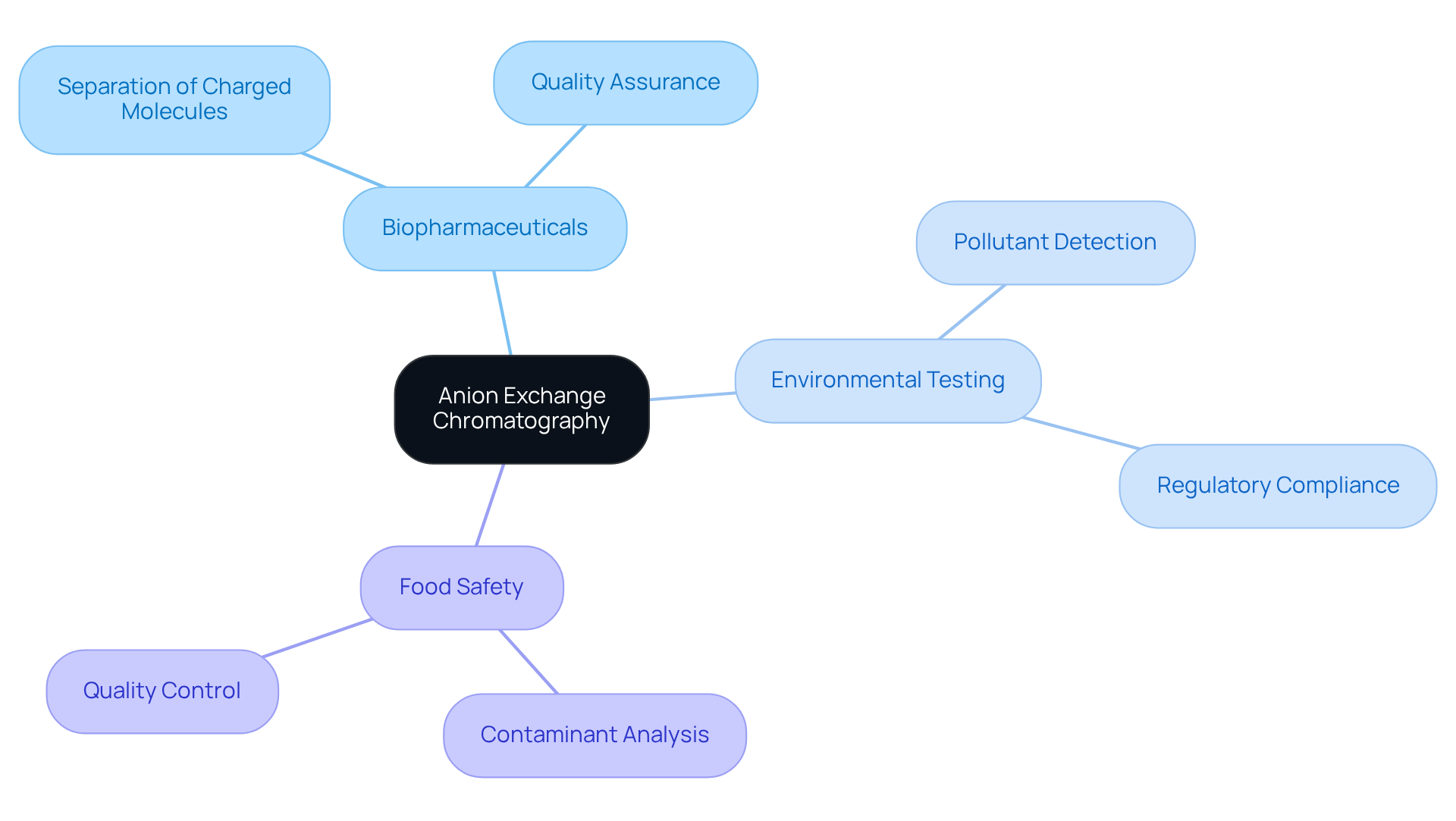
Conclusion
The exploration of anion exchange columns highlights their essential role in enhancing laboratory efficiency, especially within the pharmaceutical sector. These advanced tools not only facilitate the purification of complex biomolecules but also guarantee high yield and quality in research outcomes. By integrating the appropriate anion exchange columns, lab managers can substantially optimize their workflows, thereby contributing to the overall success of their scientific endeavors.
Throughout the article, various anion exchange column options have been examined, including:
- JM Science's versatile solutions for protein purification
- Bio-Rad's efficient small-scale systems
- Hamilton Company's high-performance HPLC columns
Each product presents unique advantages tailored to specific laboratory needs, whether it involves achieving high-resolution separations or addressing intricate analytical challenges. Furthermore, the importance of selecting the right columns based on factors such as hydrophobicity and application requirements has been underscored, guiding lab supervisors in making informed decisions.
Ultimately, embracing anion exchange chromatography transcends mere improvements in laboratory processes; it represents a commitment to advancing scientific research and ensuring the safety and efficacy of pharmaceutical products. As the field continues to evolve, staying informed about the latest advancements and best practices in anion exchange techniques will empower laboratory managers to meet emerging challenges and uphold the highest standards in their work.




